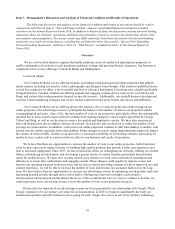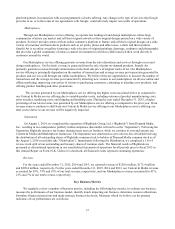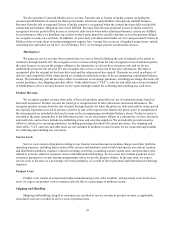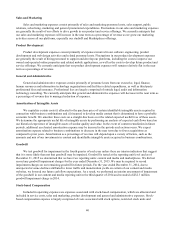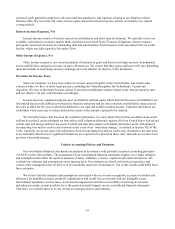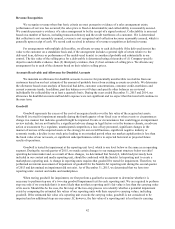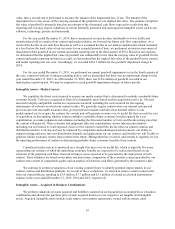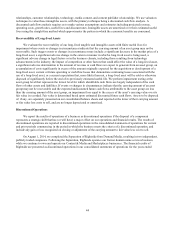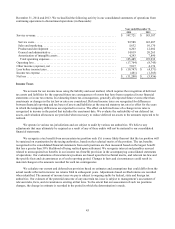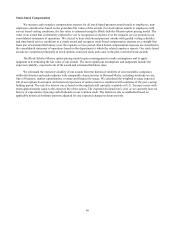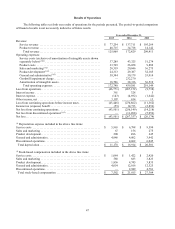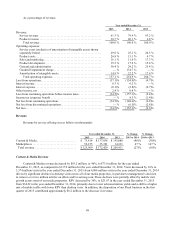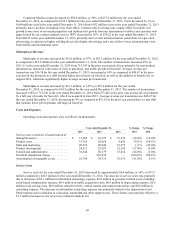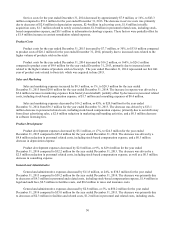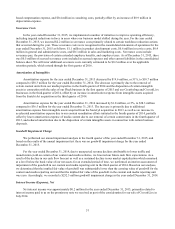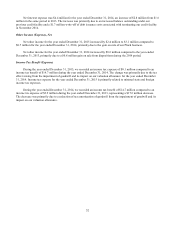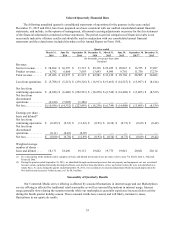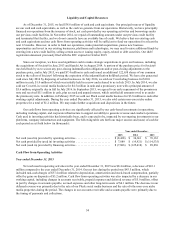Enom 2015 Annual Report Download - page 48
Download and view the complete annual report
Please find page 48 of the 2015 Enom annual report below. You can navigate through the pages in the report by either clicking on the pages listed below, or by using the keyword search tool below to find specific information within the annual report.46
Stock-based Compensation
We measure and recognize compensation expense for all stock-based payment awards made to employees, non-
employees and directors based on the grant date fair values of the awards. For stock option awards to employees with
service based vesting conditions, the fair value is estimated using the Black-Scholes-Merton option pricing model. The
value of an award that is ultimately expected to vest is recognized as expense over the requisite service periods in our
consolidated statements of operations. We elected to treat stock-based payment awards with graded vesting schedules
and time-based service conditions as a single award and recognize stock-based compensation expense on a straight-line
basis (net of estimated forfeitures) over the requisite service period. Stock-based compensation expenses are classified in
the consolidated statement of operations based on the department to which the related employee reports. Our stock-based
awards are comprised principally of stock options, restricted stock units and, in the past, restricted stock awards.
The Black-Scholes-Merton option pricing model requires management to make assumptions and to apply
judgment in determining the fair value of our awards. The most significant assumptions and judgments include the
expected volatility, expected term of the award and estimated forfeiture rates.
We estimated the expected volatility of our awards from the historical volatility of selected public companies
within the Internet and media industry with comparable characteristics to Demand Media, including similarity in size,
lines of business, market capitalization, revenue and financial leverage. We calculated the weighted average expected
life of our options based upon our historical experience of option exercises combined with estimates of the post-vesting
holding period. The-risk free interest rate is based on the implied yield currently available on U.S. Treasury issues with
terms approximately equal to the expected life of the option. The expected dividend rate is zero as we currently have no
history or expectation of paying cash dividends on our common stock. The forfeiture rate is established based on
applicable historical forfeiture patterns adjusted for any expected changes in future periods.


